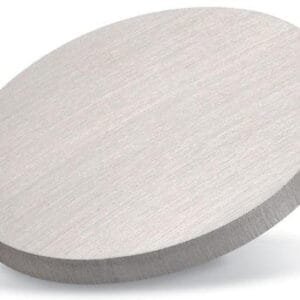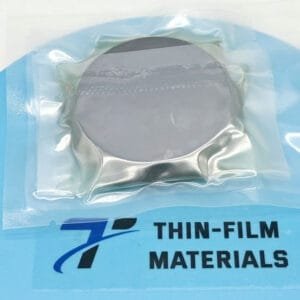N-type Silicon (N-doped Si) Sputtering Target
Introduction
N-type Silicon (N-doped Si) Sputtering Targets are specialized semiconductor-grade materials used in thin film deposition. By doping high-purity silicon with controlled amounts of donor impurities (such as phosphorus, arsenic, or antimony), these targets provide enhanced electrical conductivity while retaining silicon’s crystalline stability. They are widely applied in microelectronics, thin film transistors, optoelectronics, and solar energy devices.
Detailed Description
Unlike intrinsic silicon, N-doped silicon sputtering targets incorporate donor elements that increase electron carrier concentration. This results in films with tailored electrical properties and improved performance in semiconductor devices.
Key features include:
High Purity Silicon Base (≥99.999%) – minimizes contamination for electronic applications.
Controlled Doping Levels – phosphorus, arsenic, or antimony doping from ~1×10¹⁸ to 1×10²⁰ cm⁻³.
Uniform Doping Distribution – ensures consistent thin film characteristics.
Customizable Forms – circular or rectangular targets to fit magnetron sputtering systems.
Optional Bonding – indium or elastomer bonding to copper backing plates for high-power applications.
These features make N-type silicon targets suitable for both R&D and large-scale semiconductor manufacturing.
Applications
N-type Silicon (N-doped Si) sputtering targets are used in:
Semiconductor Devices – thin film transistors, IC fabrication, and MEMS.
Solar Energy – thin film solar cells and passivation layers.
Optoelectronics – light detection and emission devices.
Display Technologies – thin film coatings for LCDs, OLEDs, and touch panels.
R&D – advanced material studies on doped semiconductors.
Technical Parameters
| Parameter | Typical Value / Range | Importance |
|---|---|---|
| Purity (Si base) | 99.999% (5N) | Ensures low impurity level |
| Dopant Type | Phosphorus, Arsenic, or Sb | Provides electron donors |
| Doping Level | 1×10¹⁸ – 1×10²⁰ cm⁻³ | Tailors electrical conductivity |
| Diameter | 25 – 200 mm (customizable) | Matches sputtering system |
| Thickness | 3 – 10 mm | Influences sputtering stability |
| Bonding | Indium / Elastomer / Copper | Improves heat transfer |
Comparison with Related Materials
| Material | Key Advantage | Typical Application |
|---|---|---|
| N-type Silicon (doped) | Enhanced electron conductivity | Electronics, photovoltaics |
| Intrinsic Silicon | High resistivity, pure semiconductor | Baseline research, dielectrics |
| P-type Silicon (doped) | Hole conduction, complementary devices | CMOS circuits, sensors |
FAQ
| Question | Answer |
|---|---|
| What dopants are available for N-type silicon? | Phosphorus, arsenic, and antimony are commonly used. |
| Can doping concentration be customized? | Yes, doping levels are tailored to specific electrical requirements. |
| Is bonding necessary? | For high-power sputtering, indium or elastomer bonding is recommended. |
| Which industries use N-doped Si targets? | Semiconductor, photovoltaics, display, and microelectronics. |
| How are targets packaged? | Each target is vacuum-sealed, moisture-protected, and shipped in export-safe cartons or crates. |
Packaging
Each N-type Silicon sputtering target is vacuum-sealed under cleanroom conditions with moisture and contamination protection. Targets are cushioned in foam inserts and shipped in sturdy export cartons or wooden crates for safe delivery.
Conclusion
N-type Silicon (N-doped Si) Sputtering Targets provide controlled electrical conductivity and high purity for semiconductor and thin film applications. With customizable doping levels, dimensions, and bonding options, they are an essential material for both advanced R&D and industrial-scale electronics manufacturing.
For detailed specifications and a quotation, please contact us at [sales@thinfilmmaterials.com].




Reviews
There are no reviews yet.